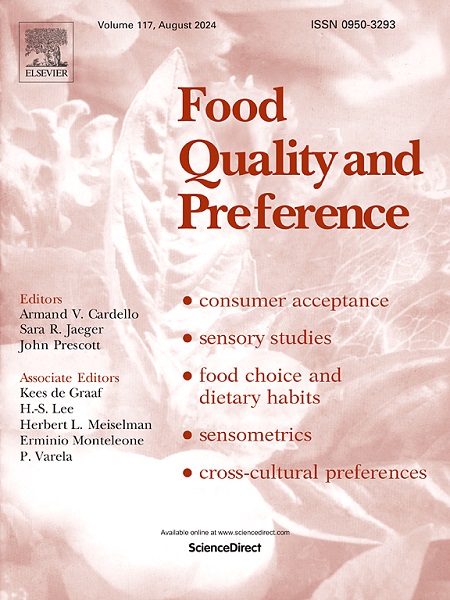社区之声:消费者研究中研究低收入人群的不同方法
IF 4.9
1区 农林科学
Q1 FOOD SCIENCE & TECHNOLOGY
引用次数: 0
摘要
弱势消费者可以被定义为面临不利处境的个人,这种不利处境的起因通常是他们无法控制的,并且源于多种来源和环境。消费者弱势的影响涉及数十亿人,其主要情况之一是贫困或低收入消费者。据估计,有 24 亿人被认为是低收入者,但这并不是科学出版物中常见的研究目标。我们的目标是采用一种名为 "社区之声 "的社会方法来研究低收入人群,通过与当地非政府组织合作,更好地招募人员、开展实地调查,并将有价值的见解反馈给低收入人群。在我们的研究中,我们进行了三项研究,以了解研究低收入人群的影响。研究 1 的重点是比较实地调查环境的影响:非个人面对面访谈与社区声音方法(每项研究 160 纽币);研究 2 的重点是研究参与者收入差异的影响(低收入与高收入,每项研究 120 纽币),以及实地调查类型对低收入消费者的影响(在线与面对面,每项研究 120 纽币)。研究 1 的结果显示,在不同条件下,消费者对产品的喜好程度存在显著差异;研究 2 显示,消费者对产品的喜好程度和感知程度存在显著差异,但在情感方面没有差异。研究 3 显示,植物基产品的用途和食物选择习惯存在显著差异。总之,我们的研究结果表明,在研究低收入人群时,研究人员不能将其他人群(如高收入人群)的研究结果推广到低收入人群,也不能使用标准方法并期望得到相同的结果。本文章由计算机程序翻译,如有差异,请以英文原文为准。
Community voices: A different approach to study low-income populations in consumer research
Vulnerable consumers can be defined as individuals facing a disadvantage, where the origin of that disadvantage is usually beyond their control and stems from multiple sources and circumstances. The impact of consumer vulnerability extends to billions of individuals, one of its major circumstances is poverty, or low-income consumers. An estimated 2.4 billion of persons are considered low-income, and yet it is not a common research objective in scientific publications. Our objective is to bring a social approach to study low-income populations called Community Voices, where we partner with local NGO’s to better recruit, perform fieldwork, and return valuable insights to the low-income populations. In our research, three studies were conducted to understand the impact of studying low-income populations. Study 1 focus on comparing the effect of fieldwork environment: impersonal face-to-face interviews versus Community voices approach (N160 per study), Study 2 focus in studying the effect of income differences in participants (low versus high-income, N120 per study), and the effect of type of fieldwork in low-income consumers (online versus face-to-face, N120 per study). The results of study 1 showed significant differences in liking across conditions, study 2 showed significant differences in liking and product perception, but not in emotions. Study 3 showed significant differences in uses and habits towards food choice of plant-based products. Overall, our findings suggest that to study low-income populations, the researcher cannot generalize the results of other populations (e.g., high-income) to lower income populations, and con not use standard methodologies and expect the same results.
求助全文
通过发布文献求助,成功后即可免费获取论文全文。
去求助
来源期刊

Food Quality and Preference
工程技术-食品科技
CiteScore
10.40
自引率
15.10%
发文量
263
审稿时长
38 days
期刊介绍:
Food Quality and Preference is a journal devoted to sensory, consumer and behavioural research in food and non-food products. It publishes original research, critical reviews, and short communications in sensory and consumer science, and sensometrics. In addition, the journal publishes special invited issues on important timely topics and from relevant conferences. These are aimed at bridging the gap between research and application, bringing together authors and readers in consumer and market research, sensory science, sensometrics and sensory evaluation, nutrition and food choice, as well as food research, product development and sensory quality assurance. Submissions to Food Quality and Preference are limited to papers that include some form of human measurement; papers that are limited to physical/chemical measures or the routine application of sensory, consumer or econometric analysis will not be considered unless they specifically make a novel scientific contribution in line with the journal''s coverage as outlined below.
 求助内容:
求助内容: 应助结果提醒方式:
应助结果提醒方式:


